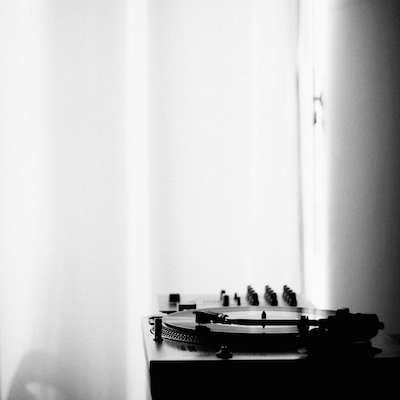
Minimalist music is one of the most fascinating and influential movements in contemporary music, emerging in the late 20th century and evolving over the decades that followed. Characterized by repetition and simplicity, this musical form challenges traditional conventions and invites listeners to experience sound in an entirely new way. Through repetitive structures and subtle harmonic progressions, minimalist music creates a soundscape that can be both hypnotic and meditative, offering a unique and immersive listening experience.
Philip Glass, one of the most prominent composers associated with minimalism, played a pivotal role in popularizing the genre’s techniques. His works are marked by rhythmic patterns, gradual transformations, and an innovative approach to melody and harmony. Glass’s music not only captivated audiences but also influenced generations of composers and musicians, prompting a rethinking of what music can be and how it can be experienced. In this article, we’ll explore how Philip Glass’s minimalist techniques work, the benefits of engaging with minimalist music, and the broader impact this style has had on modern composition.
How Philip Glass’s Minimalist Composition Techniques Work
Philip Glass’s minimalist composition techniques are based on principles of repetition and variation. He often employs short sequences of notes that are repeated multiple times, creating a sense of motion and subtle evolution throughout the piece. This approach encourages listeners to focus on the nuances and slight changes within the repetition, rather than being swept up in traditional melodic complexity. These sequences are frequently structured into interlocking rhythmic patterns, forming a rich and engaging sonic tapestry.
Another key element in Glass’s technique is his use of simple yet effective harmony. He tends to rely on easily recognizable chords that, when combined with repetition, create emotional depth and resonance. This blend of harmonic clarity and rhythmic complexity is a defining feature of minimalist music and is especially evident in Glass’s compositions. Harmony becomes a vessel for emotional expression, drawing listeners into a deeper, more contemplative experience.
Glass also frequently uses a technique called “phasing,” in which two or more melodic lines are played at slightly different tempos. This creates a sliding, shifting effect where the melodies seem to drift apart and re-align, generating tension and release. This method challenges conventional expectations and offers a new way of listening to music. The interaction between these melodic layers produces a harmonic richness unique to Glass’s style.
Importantly, repetition in Glass’s music is not just structural—it is intentional. He uses repetition as a form of meditation, inviting listeners to lose themselves in the sound and enter a state of introspection. This transforms the listening experience into a contemplative moment, where music becomes a space for emotional and spiritual exploration. Glass’s minimalist techniques are not only innovative, but also profoundly resonant on a personal level.

Advantages of Exploring Minimalist Music: Repetition and Structure
One of the key advantages of exploring minimalist music is its ability to create a sound environment that fosters focus and introspection. The repetition of musical structures enables listeners to connect with the music on a deeper level, delivering an auditory experience that can be both calming and thought-provoking. In today’s fast-paced world, minimalist music offers a welcome refuge from daily distractions.
Another benefit is the accessibility of minimalist music. Composers like Philip Glass often employ straightforward structures that are easy to follow, even for those with little musical background. This makes minimalist music a gateway for new listeners, allowing them to engage with musical concepts without feeling overwhelmed. The simplicity of form and harmony opens up the genre to a broader audience and encourages deeper appreciation of musical art.
Minimalist music also provides a strong platform for innovation and experimentation. By moving away from traditional compositional forms, composers are free to explore new ideas and structures. This not only expands the musical repertoire but also inspires other genres to incorporate minimalist elements into their own work. The influence of minimalism can be seen across a wide range of music, from electronic and ambient to pop and rock, underscoring its lasting relevance.
Finally, the emphasis on repetition and structure in minimalist music allows for a powerful mode of emotional expression. Through repetition, composers can explore complex and subtle emotions, giving listeners the opportunity to feel a wide range of sensations. This ability to communicate emotional depth in a simple and direct way is one reason minimalist music continues to resonate so strongly with audiences.
How Minimalist Music Impacts Musical Composition
Minimalist music has had a profound impact on contemporary musical composition, influencing not only composers but performers and producers across many genres. One of its main effects is how it challenges traditional ideas about what composition should be. By focusing on repetition and simplicity, composers are encouraged to discover new ways of expressing ideas and shaping sound.
Minimalist music embraces the idea that “less is more,” prompting composers to refine their focus on essential musical elements like rhythm and melody. This can result in works that are more impactful, where every note and silence holds intention and meaning.
The use of repetition in minimalist music has also inspired the widespread adoption of loops and samples in genres such as electronic music and hip-hop. These production techniques, now central to modern music, allow artists to build complex works from seemingly simple patterns.
Furthermore, minimalist music has influenced the way live performances are conceived. Musicians are often encouraged to explore the relationship between sound and space, creating immersive experiences that go beyond traditional listening and become almost spatial or sensory in nature.
Another major influence of minimalist music is its connection to meditation and spirituality. Many contemporary composers use minimalist techniques to construct soundscapes that invite reflection, creating sonic environments ideal for contemplation. This approach has expanded the purpose of music beyond entertainment, using it as a tool for wellness and emotional exploration.
The influence of minimalism can be felt across musical genres, proving that it is not just a style but a movement that continues to shape the evolution of music. By challenging norms and opening new creative paths, minimalist music drives innovation and diversity in the contemporary music scene.

Did You Enjoy Learning About Minimalist Music: Repetition, Structure, and the Impact of Philip Glass?
Minimalist music, with its focus on repetition and structure, offers a refreshing perspective on musical composition and listening. The influence of Philip Glass and other minimalist composers continues to shape contemporary music, inspiring new artists and challenging established conventions.
If you found yourself intrigued by this musical style, don’t hesitate to explore further. Minimalist music has many layers and forms, each offering its own path to discovery. A journey through repetition and evolving structure can reveal a rich and compelling sound world—one that invites you to listen differently and feel more deeply.
Frequently Asked Questions
What is minimalist music?
Minimalist music is a style that uses limited musical elements. It focuses on repetition and simplicity to create a unique listening experience.
How did Philip Glass influence minimalist music?
Philip Glass is one of the leading figures in minimalist music. He introduced new ideas about structure and rhythm that helped popularize the style.
What are the key features of minimalist music?
Minimalist music is known for its repetition, simple patterns, and subtle changes over time. These create a hypnotic or meditative effect.
Is repetition important in minimalist music?
Yes! Repetition is the foundation of minimalist music. It builds atmosphere and keeps the listener engaged through gradual changes.
Where can I listen to minimalist music?
You can find minimalist music on most streaming platforms. Look for playlists or artists like Philip Glass, Steve Reich, or Terry Riley and explore what resonates with you.
Can minimalist music be emotional or expressive despite its simplicity?
Absolutely. Minimalist music often conveys deep emotion through subtle shifts and repetition. Its simplicity allows listeners to focus on texture and feeling, making the experience both intimate and powerful.

